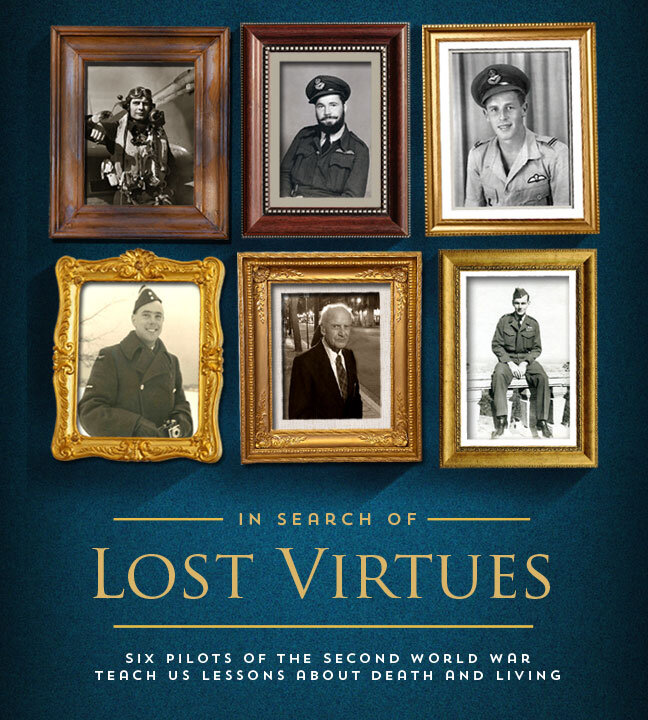THE GRACE OF GOD
As we entered the month of June, 1944 I was also entering my fourth year overseas and thirteenth month with 401 Squadron, keeping my fingers crossed that I would not be `bumped’ by one of the stream of former instructors now coming over from Canada.
That the invasion of France was imminent was evident by the fact that just about every field between London and the channel coast was packed tightly with either Sherman tanks, Army trucks or field artillery, In addition, the mysterious concrete structures appearing in small harbours along the Channel coast suggested the Channel would be the jump-off coast. (These, together with a number of scuttled ships, would later prove to be components of the two Mulberry harbours). Finally, to add to our 126 Wing of 401, 411 and 412 squadrons, W/C Lloyd Chadburns’ 127 Wing, comprised of 402, 416 and 421 squadrons moved into Tangmere. With our tents folded and taken away by the first of June we were temporarily housed in the comfort of Tangmere’s permanent quarters. With as many as 72 Spitfires roaring at one time, Tangmere became a very busy, noisy place.
On June 3, 401 Squadron together with 412 Squadron was ordered to sweep the area in Normandy which, unknown to us, would be the scene of the imminent invasion. As it happened, at this time I was awaiting a replacement aircraft for mine which had been at least temporarily `retired’ due to flak damage. In these instances we took whatever substitute we were assigned. I was already strapped in my assigned machine when Cy Cohen, my number two for the day, climbed up on my wing to tell me that I had been given the Spit he usually flew - “would I mind switching with him.”? I had no objections, got out and we switched machines.
To avoid detection as long as possible, we crossed the 120 miles of channel very low, climbing up to a couple of thousand feet after making landfall. For almost two hours we toured what would, within a few days, become the battle fields of the Normandy invasion, ending up taking in the Cherbourg peninsula. Strangely, it seemed, there was no attempt made to interfere with our touring, and we saw no activity either in the air or on the ground. I believe we erred in getting back down near the water for the return trip, as there was no longer any need to hide and the low level greatly reduced the chance for survival in the case of an engine failure over water. About 20 miles out on the home leg, Cy dropped back from my right wing where he had been flying, calling to say his engine had quit and he was bailing out. I immediately turned back, but there was no sign of Cy’s aircraft or a parachute. A short distance behind I could see the green dye from his Mae West, spreading over the water, but no sign of his chute or the aircraft. We continued to circle the area in the slim hope he would surface, but eventually had to give up or risk the possibly of running out of fuel. I am not a particularly religious person, but looking down at that patch of green I could not help thinking `There, but for the Grace of God, go I’.
As early as June 4 my log book recognized that invasion movements had begun, when I recorded `covering’ invasion ships’ in my log book. Again on the 5th of June I logged one hour thirty covering `invasion ships’. I recall this trip very clearly. Unknown to us of course, the invasion had been planned for June 5, but was cancelled due to weather. That probably was a very wise decision, since the cloud base that day was little better than 300’, and the sea was boiling. Before the cancellation had been decided some troop carrying ships had already put to sea. Rather than bring them back to land, only to have to turn them around almost immediately for the real invasion the following day, it was decided to leave them at sea. While it seemed highly unlikely the Luftwaffe would be out in such weather, our job was to cover the ships at sea during daylight, and to make sure any enemy aircraft that did come near spotting them were not to be allowed to return with the news. I returned from that trip to find my `new’ replacement Spit had arrived and my crew were busy decorating it with its `Wasp Wings’ - the same identification markings we had on our Spits at Redhill for the phoney invasion marking the previous September - when the `Wasp Wings’ idea first evolved.
From “They Shall Not Grow Old”
A listing of all Second World War Air Fatalities
Flying Officer Cyril L. Branston Cohen J17619
From Swift Current, Saskatchewan. Killed in action June 3/44 #401 `RAM' Squadron. F/O Cohen, age 21, was returning from a fighter sweep near Argentan and Falais, France. He was flying at 700' when he reported engine trouble. He was seen by someone to remove his helmet before bailing out of Spitfire MX 840, when the aircraft suddenly dove into the English Channel about 50 miles south of Selsey Bill, England. F/O Cohen abandoned the aircraft but he was too low for his parachute to open. The squadron circled the scene for about 30 minutes but nothing was seen. Flying Officer Cohen has no known grave, his name is inscribed on the Runnymede memorial, Englefield Green. Egham Surrey, England.
Invasion Stripes, or as Bill McRae and his squadron mates liked to call them, “Wasp Wings” are applied to a 126 Wing Spitfire by 411 Squadron erks LAC Ken Applesby and LAC Stan Rivers at RAF Tangmere on exactly June 5th 1942. This, the day before D-Day, is the same day and same place where McRae saw his replacement Spitfire being painted.









